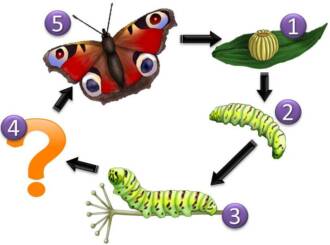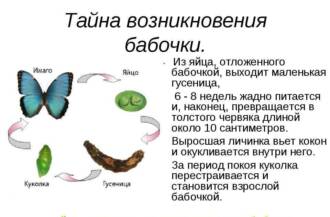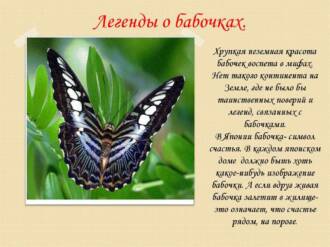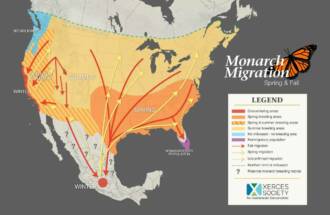
In this short story I would like to share with you the story of one butterfly. A butterfly is an amazing creation of nature that goes through an unusual transformation to reveal its beauty.
At the beginning of its journey, the butterfly is in the form of a caterpillar. She crawls on the ground and feeds on the leaves of plants. The caterpillar is able to eat more than an adult butterfly can afford, as it must gain enough energy for future transformation. When the caterpillar is already full, it turns into a chrysalis.
An amazing transformation takes place inside the chrysalis. There the caterpillar turns into a butterfly. This is a process that can take weeks or months. When the butterfly is ready, it crawls out of the chrysalis and spreads its wings. Now she is ready to fly and have a wonderful journey around the world.
From egg to caterpillar: the first stage of transformation
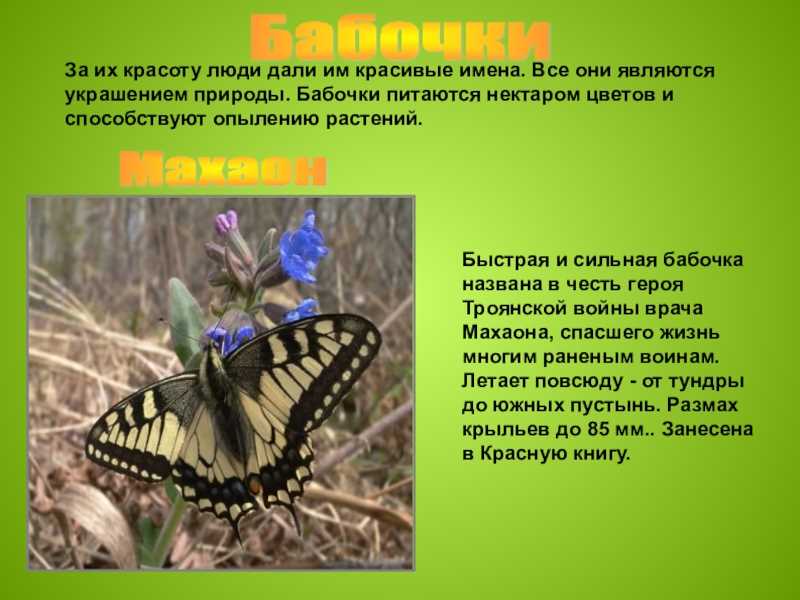
A short story about a butterfly begins with its earliest stage of life - the egg. Butterflies lay eggs on various plants, choosing places where the caterpillars will find enough food for their development.
Butterfly eggs can be very small and beautifully decorated. It can be round or oval, have a different shape and color. But regardless of the appearance, the future caterpillar is already inside the egg, which will develop and grow until it is ready to turn into a chrysalis.
When the egg hatches, a caterpillar emerges from it. The caterpillar is the first stage of the butterfly's transformation. Caterpillars have an amazing ability to eat and stretch their bodies. They actively feed on plants to get all the necessary nutrients for their growth.
Caterpillars usually have a soft, segmented body. They come in a variety of colors and patterns to better blend in with their surroundings and be invisible to predators. Caterpillars also have legs that help them move around and grab food. They grow very quickly and change their appearance over several weeks until they reach a certain size.
Caterpillar: time to grow and find food

When a caterpillar first hatches from an egg, it is very small and defenseless. However, she has one important task - to grow and gain weight. The caterpillar spends most of its life eating food in order to obtain all the necessary nutrients for its future transformation.
The caterpillar actively searches for food, especially plant leaves, which are the main food source for most caterpillar species. She can walk quite a distance in search of food, and her appetite seems to be inexhaustible. The caterpillar constantly chews and consumes a large amount of food in order to maintain its rapid growth.
The caterpillar not only seeks food, but also protects itself from predators. She has various defense mechanisms such as hairs or spikes on her body to scare off enemies. She can also use her bright colors or disguises to hide herself from danger.
The growth and foraging time for a caterpillar can be quite short, but it is the most important stage of its life. The size and quality of the food it eats determines its future development and ability to turn into a beautiful butterfly.
Fascinating transformation: from caterpillar to chrysalis
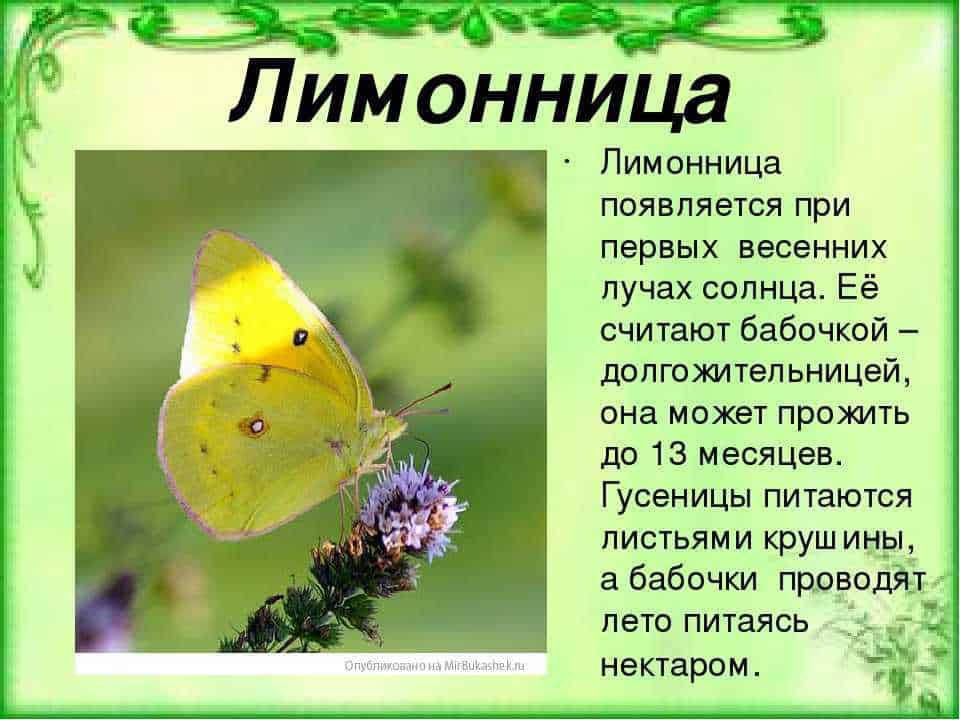
From caterpillar to chrysalis

A short story about a butterfly begins with the phase of its life that is the most impressive and mysterious - the transformation of a caterpillar into a chrysalis. After the caterpillar reaches a certain size and completes its growth, it begins to build a special shelter for itself - a chrysalis.
The caterpillar attaches itself to a branch or other suitable surface and begins to weave a silky thread from which it creates its shelter. Gradually, the caterpillar forms a thin and strong shell around itself, which becomes a chrysalis.
Metamorphosis inside the chrysalis

However, this external appearance of the chrysalis does not reflect what is happening inside it. During this phase of the butterfly's life cycle, a real metamorphosis occurs. Inside the chrysalis, the caterpillar undergoes significant changes - its body decomposes and then rebuilds into an entirely new form.
The cells of the caterpillar begin to multiply and form new cells that will make up the future organs of the butterfly. During this metamorphosis, the caterpillar turns into a chrysalis, and then a beautiful butterfly emerges from the chrysalis.
Magic of nature
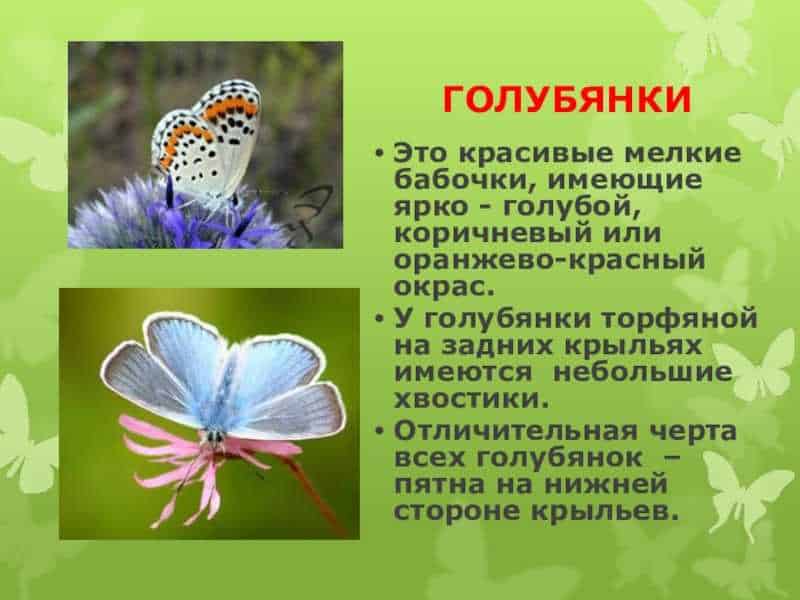
The transformation of a caterpillar into a chrysalis and finally into a butterfly is one of the most amazing phenomena in nature. This is a process that shows us how incredibly diverse and beautiful the life of our planet is.
We can see how a beautiful and light butterfly is born from a simple and inconspicuous caterpillar, which can captivate with its beauty and fly in the breeze. It is the magic of nature that reminds us of the endless possibilities and transformation that can take place in our lives.
The Amazing Birth of a Butterfly: From Pupa to Adult
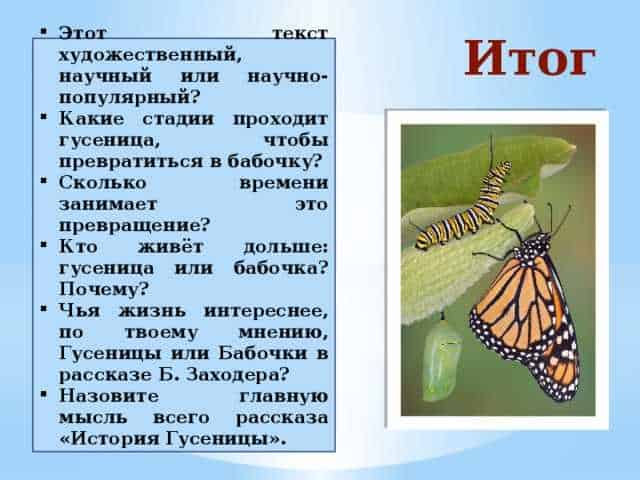
A short story about a butterfly begins from the moment when it is in the chrysalis stage. The butterfly stays in this state for several weeks or even months, depending on the species. The chrysalis is a special protective coating in which amazing transformations take place.
Inside the chrysalis, a process of metamorphosis takes place, as a result of which the butterfly turns from a caterpillar into an adult creature. When the time comes, the butterfly begins to crawl out of the chrysalis. This is due to muscle contraction and the active movement of the butterfly.
When the butterfly completely crawls out of the chrysalis, it remains hanging on it for several hours. At this time, she unfolds and spreads her wings, which were previously folded along the body. It is important that the butterfly's wings are fully extended, as this allows it to fly and enjoy its new look.
When the butterfly's wings are fully extended, it is ready to fly. The butterfly can fly long distances, visiting various flowers in search of food and a breeding partner. It becomes an important part of the natural ecosystem, carrying pollen and contributing to plant pollination.
Magic wings: the beauty and variety of butterflies
A short story about a butterfly

Butterflies are some of the most beautiful and amazing creatures that can be found in nature. They have delicate wings, painted in a variety of shades. Each type of butterfly has its own unique coloring, which makes them even more attractive.
Butterfly wings, in turn, are a true work of art of nature. They are often decorated with bright patterns and patterns that allow butterflies to easily hide from the background of the environment or, conversely, to attract attention.
The diversity of butterflies is striking in its variety of shapes and sizes. Some species have large wings with fancy cutouts, others are small and delicate. Butterflies can be multi-colored, monochromatic, or have several shades in one pattern.
Interestingly, butterfly wings are not only beautiful, but also perform an important function - they help butterflies fly. The wings consist of thin plates that are connected to each other by special veins. Thanks to this structure, butterflies can easily unfold and fold their wings during flight.
The magical wings of butterflies are one of the wonders of nature, which makes them unique and attractive. They are a symbol of beauty and transformation, because butterflies go through an amazing transformation from a caterpillar to a beautiful insect with colorful wings.
The role of butterflies in the ecosystem: pollinators and indicators of environmental health
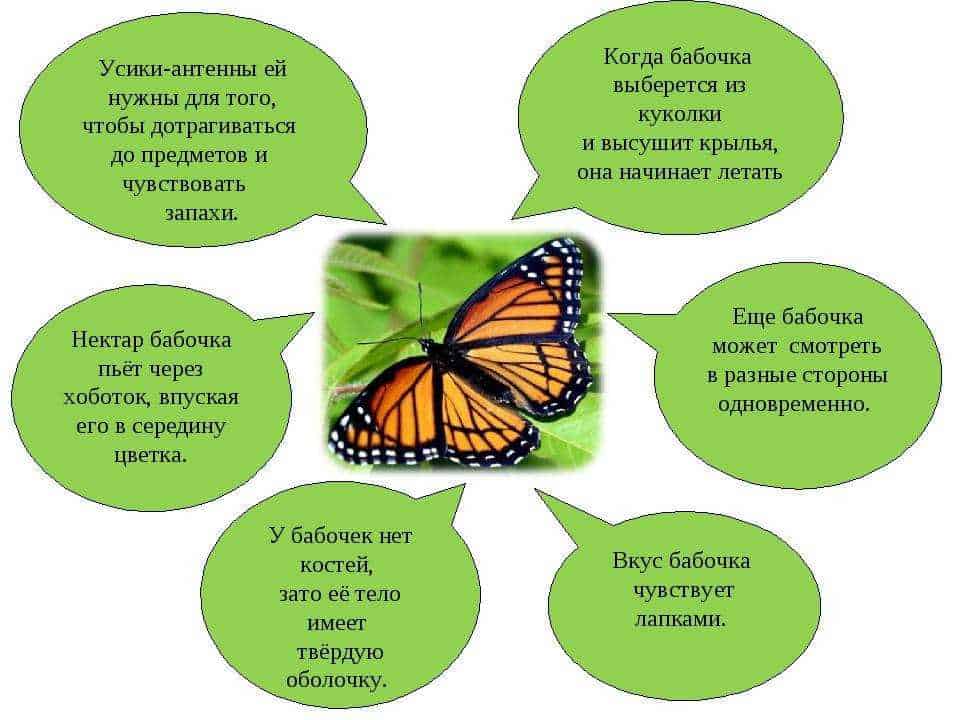
Butterflies play an important role in the ecosystem by acting as pollinators. They carry pollen from one flower to another, contributing to the fertilization of plants. Through this process, plants can form seeds and fruits, which is the basis for the reproduction and conservation of species. Without the participation of butterflies, many plants would not be able to reproduce and exist in the ecosystem.
In addition, butterflies are indicators of the health of the environment. Their presence and diversity testify to the biological richness and balance of the ecosystem. If the number and diversity of butterflies are declining, this may be a sign of an ecological imbalance. For example, the use of pesticides or the destruction of natural habitats can lead to a decrease in the population of butterflies and the deterioration of the ecosystem as a whole.
Therefore, in order to preserve the health of the environment, it is important to take care of nature and consider the role of butterflies in the ecosystem. Maintain plant diversity, provide them with suitable conditions for growth and reproduction, and avoid the use of chemicals that can adversely affect biodiversity. Thus, butterflies are not only beautiful creatures, but also irreplaceable members of the ecosystem that help maintain its balance and health.
Fascinating Journey: Butterfly Migrations Around the World
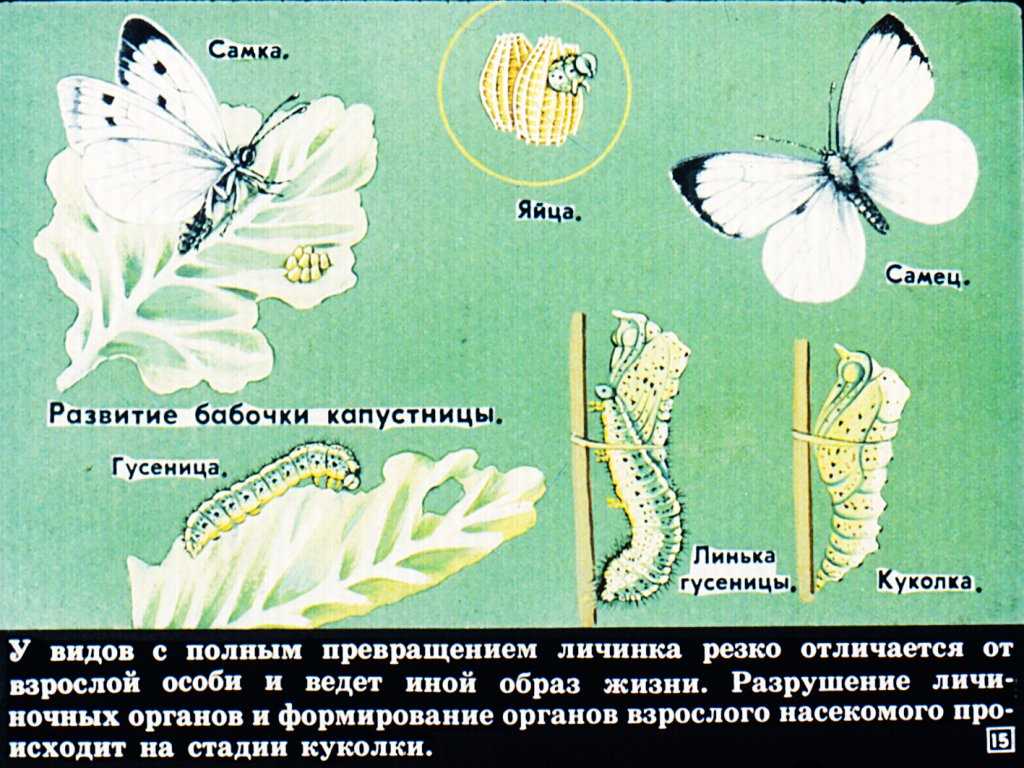
A short story about a butterfly begins with its incredible ability to migrate. Butterflies from different parts of the world make long and amazing journeys to find new places to breed and find food. They cover vast distances, crossing oceans, mountains and deserts, and this is one of the most amazing phenomena in the natural world.
During migration, butterflies navigate by various factors such as the sun, the Earth's magnetic field, and scents. They use their delicate wings to fly vast distances, and many of them can travel over 3,000 kilometers on their journey. They can even overcome mountains, rising to a height of more than 2000 meters.
One of the most famous butterfly migrations takes place in North America, where millions of monarch butterflies fly from Canada and the United States to Mexico each fall. This journey lasts about two months, and the butterflies fly over 4,000 kilometers. They congregate in huge groups called colonies and create an incredible spectacle by covering trees in the forests of Mexico.
Butterfly migrations are of great importance for biodiversity and the ecosystem. They help pollinate plants and disperse seeds, which helps to preserve and maintain natural ecosystems. In addition, butterfly migrations are a phenomenon that endows nature with beauty and magic, capturing the imagination of people who have a unique opportunity to see this amazing phenomenon.
Read more:


